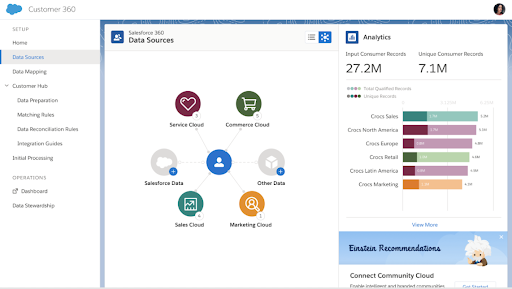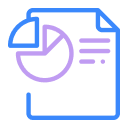In today’s competitive landscape, speed to lead—the time it takes to respond to a new lead—can make or break a business. Research shows that responding within 5 minutes can improve the chances of converting a lead by up to 75%. Salesforce has adopted an impressive approach to improve its own speed to lead, leveraging Salesforce Data Cloud, AI, and automation to capture, route, and prioritize leads in real-time.
In this article, we’ll explore how Salesforce utilizes these technologies to streamline its lead management process, and we’ll provide actionable insights on enhancing speed to lead in your own organization.
Salesforce’s Speed to Lead Process in Action
1. Automated Lead Capture

2. Intelligent Lead Assignment System and Routing
3. Real-Time Alerts for Sales Reps
Salesforce uses Slack alerts to notify sales reps instantly about leads with high buying intent. For instance, when a lead engages with the website’s pricing page, an alert is triggered. This alert includes context, such as past interactions, recommended next steps, and product interests, enabling sales reps to make personalized, informed outreach quickly.
4. AI-Powered Lead Scoring and Prioritization
5. Automated Follow-Up and Reassignment
Key Components for Implementing Speed to Lead
1. Automatic Lead Capture
2. Dynamic Lead Assignment
3. Automated Availability Checks
4. Load-Balancing and Quota Management
5. Reassignment and Escalation
Wrapping Up:
Salesforce’s approach to increasing speed to lead demonstrates the powerful impact of real-time data, intelligent routing, and AI-driven prioritization. By utilizing Data Cloud to capture, enrich, and route leads instantly, Salesforce has optimized its sales pipeline and improved lead response times by 98%. Their success underscores the importance of marketing automation, automated lead management processes and usage of AI to refine prioritization, helping businesses like yours respond quickly and efficiently.
If you’re looking to enhance your speed to lead and optimize your Salesforce lead management, we can help. As a 15-year Salesforce-focused Summit Partner and Partner Innovation Award winner, CEPTES (A Saksoft Company) specializes in leveraging Salesforce’s capabilities, from Data Cloud to automation and AI-driven solutions, to streamline and accelerate sales processes for businesses worldwide.
Our team can assist with everything from automated lead capture and dynamic assignment systems to custom AI-powered lead scoring—all designed to match Salesforce’s industry-leading speed-to-lead approach. Join the many successful companies that trust CEPTES to help them get the most out of Salesforce technology.
Get started today and accelerate your sales journey with CEPTES. Contact us to learn more about transforming your lead management strategy!
FAQs
1. What is speed to lead, and why is it important?
2. How does Salesforce improve speed to lead with Data Cloud?
3. What is intelligent lead routing, and how does it work?
4. What role does AI play in lead prioritization?
5. How can CEPTES help improve our speed to lead?

Nilamani Das
Nilamani is a thought leader who champions the integration of AI, Data, CRM and Trust to craft impactful marketing strategies. He carries 25+ years of expertise in the technology industry with expertise in Go-to-Market Strategy, Marketing, Digital Transformation, Vision Development and Business Innovation.


















